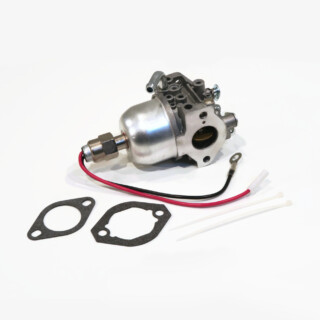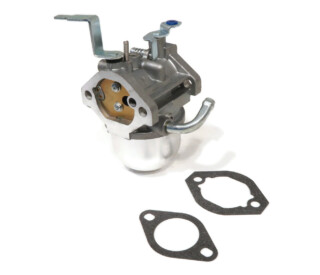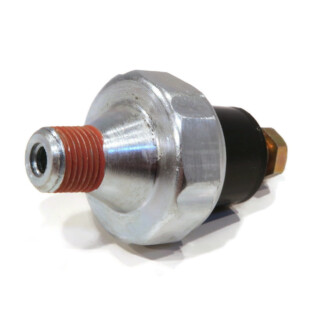
Generator Maintenance Tips to Help You Stay Safe
Be crisis-ready
For people who value peace of mind and minimizing risk, generators are important pieces of equipment. When your home is being pounded by a severe storm and the lights go out, it’s a relief knowing you have a backup source of power. However, that’s dependent on it being in good condition. Investing in this piece of equipment will do you no good if you don’t take care of it.
We’ve come up with 6 tips for properly maintaining your generator. Stay tuned to the end for a link to a bonus resource on using a generator safely.
Plus, if you’re bracing yourself for a storm, check out our printable storm preparation sheet to help you get ready.
GENERATOR MAINTENANCE AND TUNE-UP ADVICE
Before we get into specifics, it’s important to note that your owner’s manual should be your first resource for information about your generator. You’ll likely find a maintenance schedule created with your model’s specific needs in mind. However, if you’ve lost your manual or just want more information, the following advice should help.

1. Keep your generator clean.
Generators are generally meant to be kept and operated outside. However, that creates potential to collect debris. If you don’t periodically clean it, your generator can become clogged. As an added concern, a dirty generator makes it more difficult to spot potential problems such as oil leaks.1
Don’t try to clean your generator if the engine is still warm from use. Wait until it cools down so you don't hurt yourself or your equipment.
2. Stay up to date on oil changes.
Just like your vehicle, a generator uses oil which needs to be changed periodically. You should check your owner’s manual for recommendations if you can since needs can vary.
There’s usually a “break-in period” with new units where you’d want to change the oil after a small amount of use before switching to a more infrequent schedule.
For example, a Briggs & Stratton portable generator with an 1850 series engine needs an oil change after the first 5 hours of use and then yearly (or every 100 hours, whichever comes first) after that.2 Other units, like a Subaru brand, might not require an initial oil change until 20 hours of use.3
If you’re tempted to let the oil changes slide, don’t. You risk your unit losing lubrication, which could result in piston scarring and eventually complete destruction of the engine block. Not completing this simple yet crucial maintenance task is a bad idea.
While you’re at it, take the time to change the oil filter every time you change the oil.
3. Make sure your spark plug can, well, spark.
Spark plugs can get corroded over time, so it’s important to change them—or at least clean them—periodically. Like oil changes, there isn’t really a one-size-fits-all schedule, but replacing it should be a regular occurrence. For example, you might need to clean it every 200 hours and replace every 500.3
Make sure your generator is off before messing with the spark plug. (Also, it’s a good idea to remove the spark plug before doing any involved maintenance on your equipment.)
Use a socket wrench to remove the plug. If you see light deposits of gunk on it, you can clean it with a wire brush. However, be on the lookout for other damages (like scrapes) indicating that it’s time for a replacement.
You shouldn’t try to clean heavy deposits from your spark plug. Simply get a new one instead.
When you reinstall your plug, ensure that it’s snug but not overly tight.
4. Clean or replace your air cleaning element.
Once again, how often you should do this can vary. For example, some models recommend cleaning it every 50 hours, while others recommend doing so every 25 hours (or annually).3, 2
If you notice much wear and tear or yellow/brown stains on it after cleaning, you should replace your filter.





5. Take care of your fuel system.
If you use a generator (such as a portable generator) that runs on gasoline, you’ll have to be careful how that gas affects your fuel system.
Old fuel (as well as fuel containing more than 10% ethanol) can create problems for small engines. If gas sits in your equipment’s fuel system for too long, it can begin to deteriorate or create varnish that clogs your system. You can help to prevent this by using a fuel stabilizer; however, if your gas is already old, it won’t do much.
You may want to clean your fuel filter as part of your monthly maintenance routine.3
6. Do a visual check for potential issues.
From time to time, it’s recommended to check your generator for obvious issues such as damaged components, missing bolts, and frayed wires.1
This way, if there are any problems, you can correct them before they worsen—and before you’re in a crisis where you need your equipment to perform flawlessly.
It’s also smart to watch your generator while it’s in action to spot potential problems. Allow it to run for several minutes and see if any red flags crop up. You can do this monthly or as the manufacturer recommends.1, 4
Even if you’re confident your generator is still working well, it’s still recommended to “exercise” it from time to time for the sake of the battery.4
Bonus: stay safe while using a generator.
It’s crucial not only to have a generator that works properly but also to operate it safely. Check out this OSHA fact sheet on the safe use of portable generators for more information.
MORE POWER TO YOU
Although owning one can seem like a hassle, generators can be life savers if you lose power for an extended period of time.
If you have questions or need help troubleshooting your generator, feel free to reach out to our customer service department. You can also read more of our Rugged U blogs on a variety of topics, such as pressure washers, power sports, and snow removal.
Stay safe out there!
- https://generatorist.com/how-to-easily-tune-up-your-generator
- https://bsintek.basco.com/BriggsDocumentDisplay/default.aspx?filename=ngjqEKY8p.ZVj5K1w
- https://subarupower.com/wp-content/uploads/2014/10/subaru-generators-commercial-sgx3500-sgx5000-sgx7500e-owners.pdf
- https://www.familyhandyman.com/list/generator-maintenance-tips/

Having trouble using your ROP Shop pressure washer surface cleaner? These tips can help you out.

Thinking about getting a pressure washer? Here are eight advantages to owning a pressure washer to help convince you.

Installing a new pressure washer pump doesn’t have to be a hassle. Let The ROP Shop walk you through it.

Ready to learn how to pressure wash quickly, effectively, and safely? Check out these eleven tips.